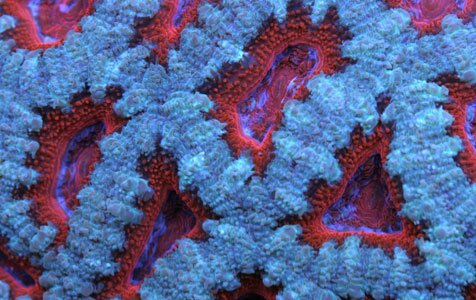Australian Lord Coral
From Microcosm Aquarium Explorer
Overview
One of the most coveted of stony corals and sometimes fetching astronomical prices for wild colonies, this is actually an easy-to-keep, fast-growing large-polyp stony coral and one of the most beautiful available to aquarists. New colonies will grow from fragments, which lowers the cost of acquisition.
Family: Mussidae
Other common name(s):
- Aussie Lord Coral
- Acan
- Lord Coral
Native range:
Habitat: Found in shallow-water reef areas in the wild.
Minimum aquarium size: 76 L (20 gal)
Lighting: Moderate to bright.
Placement: Lower in a brightly lit reef tank.
Water: Marine 24 °C (75 °F) - 28 °C (82 °F)
Feeding
Although they possess zooxanthellae, these large-polyped corals are heavy feeders. Offer minced silversides or table shrimp, mysid shrimp, or zooplankton foods for filter feeders every few days. If they are reluctant to feed, try feeding after the lights are off.
Aquarium Compatibility
May eat small, bottom-dwelling fishes such as gobies and pipefishes at night. It will sting and kill other corals that are placed too close. A 6-in. clear zone may be enough.
Special Care
Some specimens do better in bright light, others in less-intense situations. Some experimentation may be necessary. Usually do best on the bottom, away from strong direct currents.
Breeding/Propagation
Easily propagated by dividing healthy colonies with poultry shears or a Dremel cutting tool. The usual method is to start with a healthy, well-established, well-fed colony and cut between the corallites, creating single-polyp daughter colonies.
Mussid corals are remarkably tolerant of such division and will recover and start building new colonies rapidly with good water conditions and regular targeted feeding of meaty marine foods to each polyp.
Notes
Image courtesy David Burr at Vivid Aquariums, Los Angeles.
Australian Institute of Marine Science
Excellent article, "Good Lordhowensis!" by Eric Borneman and Anthony Calfo in Reefkeeping Magazine.









